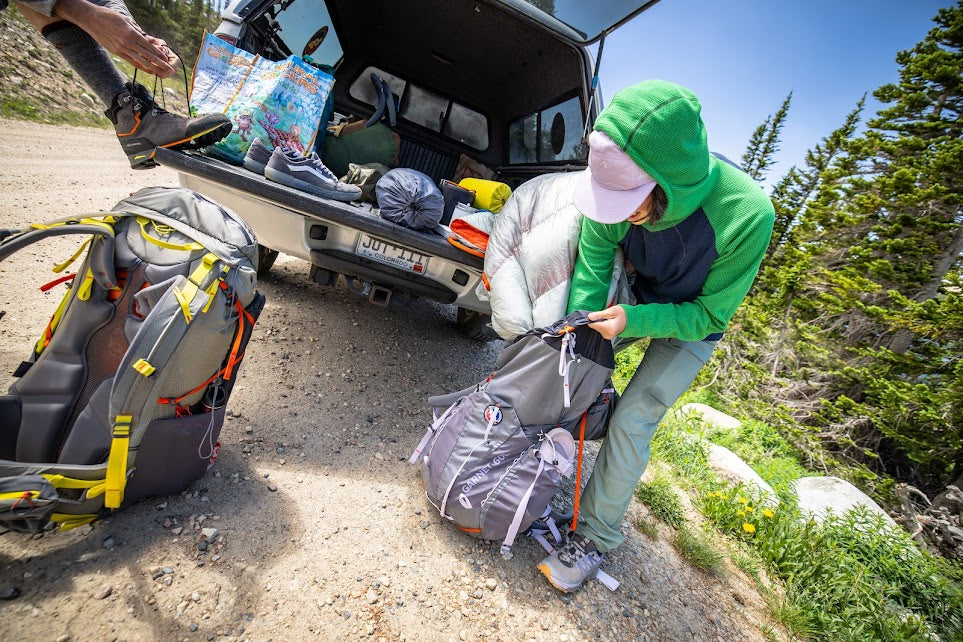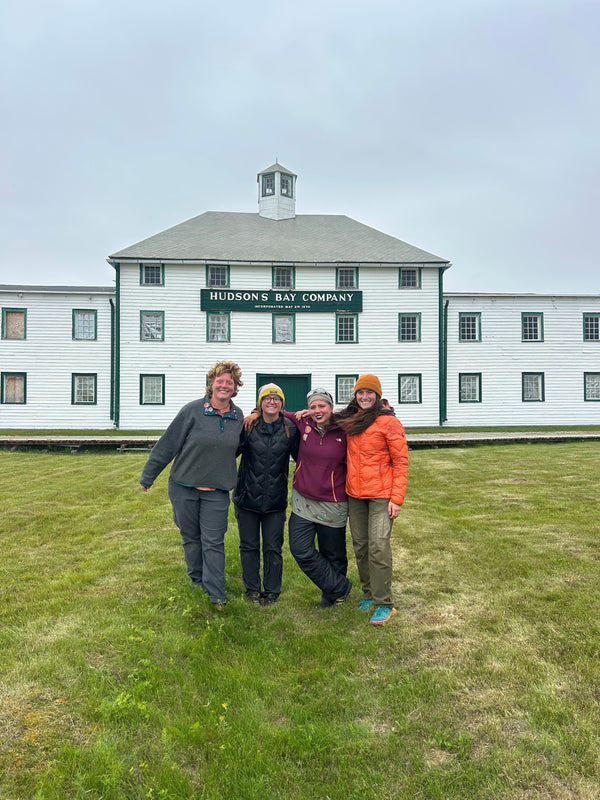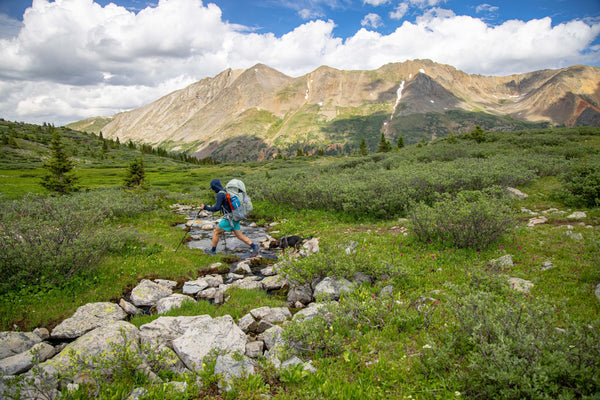The time has come to pack your backpack, hit the trail, and sleep in the dirt. Backpacking is an adventure combining hiking with backcountry camping, so be ready for a deep thigh burn and dirt under your fingernails. Living out of a backpack combined with the lack of conveniences makes backpacking an enjoyable type two activity. In the moment, as you labor up a steep grade, you might question your decision to go on this trip, but as you roast a marshmallow for s’mores and stare out at the Milky Way you’ll cherish those steep grades like a badge of honor. If this is your first backpacking trip, or your 10,000th trip, I promise there will be a nugget of goodness in this article.

Pick your style: Overnight vs Multiday
Once you know where and when you are going on your backpacking trip, the next step is to decide the style of travel, and comfort, you want while camping in the backcountry. In general, backpacking has two tiers; ultra-light or light. While a few ounces may not seem like much, on a backpacking trip, every ounce counts. The easiest way to decide your style is to select a backpack.
Ultra Light Backpacking and Overnighters (aka light-and-fast)
If I am looking to go ultralight, I’ll bring to a 40-50L backpack, my favorite is the Prospector 50L. Why 40-50L? If I am going ultralight, there is no item in my pack that doesn’t have at least three functions thus my gear can fit in a smaller pack. What I love about the Prospector 50L is the roll top, mesh pockets, and back panel access. As most of my ultralight outing are focused on a peak, or a climb, I appreciate the back panel access to quickly grab climbing gear without creating a yard sale to grab that locking carabiner sitting in the bottom of my pack.
Pros: Lighter, so you can go farther faster, your knees will like you more, you can accomplish a smash and grab mission with a short weather window
Cons: Less frills, you’ll probably eat mostly dehydrated meals, you’ll jump in fewer alpine lakes

Extended Trips and Multidays (aka slow-and-steady)
If I am looking to go the distance, I’ll bring a pack in the 60-65L realm, like the Parkview 63. With the added weight and bulk of the additional gear, I will be moving slower, but I’ll be able to stay on the trail for longer, especially with the added volume of the spindrift layer. The real reason I opt to move slower is to enjoy the place I am visiting with those I love. If I know I want to be more comfortable, eat well, and bring a camp stool. I chose to move slow and steady, so I can be with the people and places I love longer.
Pros: You can jump in all the alpine lakes (no watersheds!), time is on your side to cook better meals, more time with the loved ones in places you love
Cons: A bit heavier, more time between showers

Pick your gear to fit your style
Once you know how you plan to move, your kit is the next key component. So, what are your options? For myself, I typically group my sleeping style as such:
Cowboy Camping
The closest you can get to sleeping in the dirt. Either you know it isn’t going to rain, or you don’t care, so you ditch the tent and sleep in the dirt, maximizing your Milky Way views. Pro Tip, bring a tent footprint to protect your inflatable pad from abrasion.
Solo tent
While cowboy camping is a great way to connect with the dirt, having shelter is essential in the mountains. The Copper Spur HV UL is a great option for solo trips. Pro Tip, you’ll need a bigger pack than you think when traveling solo, I would suggest springing for the Parkview 63L pack so you can make good coffee in the morning!
Sharing a tent:
It might be a little bit stinky as the nylon holds in the warm air generated from our bodies, but on a cold night, sharing a tent can keep you 10+ degrees warmer. One of my favorite parts of sharing a tent among others is that I can pack other luxury items, like my skyline ultralight chair. Pro Tip, if you have extra gear or winter gear, size your tent up to accommodate. I like the Tiger Wall UL3 when looking for extra comfort.

10 Questions to Answer Being Heading to The Trail
1. Do I need a permit to camp or hike throughout my trip? What about a fire permit or backcountry closures?
2. Where will I get drinking water?
3. Does my backpack fit correctly? Click HERE for sizing info
4. Do I have enough breakfast, lunch, snacks, dinner, and dessert for this trip?
5. Have I double-checked that my stove works, I have a lighter, and I have enough fuel to cook my meals?
6. Have I checked the forecast? What is the weather going to be like while I am out?
7. Do I have warm layers and rain gear? Click HERE for puffy layers
8. Do I have the correct sleeping pad and sleeping bag packed? Click HERE for more info
9. Is there cell service? If not, how will I communicate in case of an emergency and route find?
10. Have I double checked for first aid, have everything packed, and let someone know my trip plan?

With over 800 nights slept in a tent, I’ve come to find these little tips and tricks help to get started backpacking. When going into the backcountry, having fun and returning safely are always my goal. To do this, having the correct group, gear, and skillset is essential. Even-though I opened this article up by saying backpacking is a type 2 fun, there are several moments of type 1 fun along the trail. Heck, I wouldn’t spend roughly half my year under the stars if it was all type two! So, call your friends, pack your trail mix, and get out into the backcountry. And make sure to brush up on the seven Leave No Trace™ principles before you lose cell service.
About the author: Dalton Johnson is an adventure photographer and writer focused on non-motorized adventures in the mountains and oceans. Check out his work on his website or follow him on Instagram. If you have any questions or comments, please reach out to Dalton on Instagram DM, or via his website.


 English (EUR) | EN
English (EUR) | EN 


